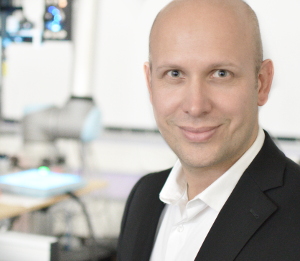Conventional methods (like Magnetic Particle Inspection) for detecting near-surface cracks and other defects beneath the surface of metal parts are pushed to their limits as they are error prone and very resource intensive. In addition to that, automation is often impossible.
Heat flow thermography however offers solutions for automated and non-destructive testing. Although some applications are still the subject of current research, PROFACTOR has managed to establish inspection systems in real production environments.
Basically, the technology uses a heat source (for example a laser, flashlight, electromagnetic induction, or convection) and a thermal camera. By analyzing the surface temperature distribution and the heat flow over time, conclusions on cracks and other defects can be drawn, which are otherwise invisible by the human eye.
Advantage of heat flow thermography in production lines:
- 100% inspection
- none-destructive and contact-free testing
- fully automated inspection
- documentation of results
- faulty products are removed from the production line
Aside from crack detection, the quality of joints and weldings, the presence of material inclusions and layer thickness can be tested. Also thermal diffusivity can be measured.
PROFACTOR works together with industrial partners to develop and create custom solutions. This covers everything from consultancy, over feasibility studies up to development and finally implementation.
References
Cooperation with INSTITUT Dr. FOERSTER
In corporation with the German company FOERSTER, a crack detection and inspection system for steel billets and other steel profiles has been developed. It is able to reliably detect cracks on profiles, transported with a velocity of up to 1.5m/s.
Distortions, which typically occur in industrial environments and which would lead to false signals are successfully suppressed by highly robust signal processing algorithms, in order to deliver stable results.
Research Project Thermobot
In the Thermobot project, a crack detection system for components with complex geometry (for example crankshafts) will be developed. A robot continuously moves the testing sample in order to ensure that every single point on the parts surface gets inspected by the thermographic system. The challenge in this project is to calibrate the path of the robot to the image data of the thermal camera.


